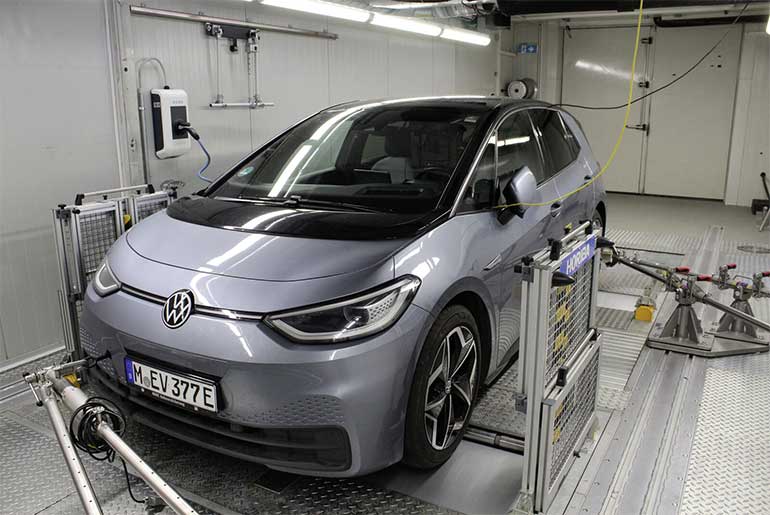The ADAC testers have given the ID.3 an excellent report after four years of endurance testing. The engineers at the Test and Technology Centre in Landsberg am Lech (Germany) covered more than 160,000 kilometers.
The key takeaway: the high-voltage battery still has a net capacity of 91 percent. An ID.3 Pro S with a net battery energy content of 77 kWh was tested. As for all other ID. models, Volkswagen guarantees that the battery of the ID.3 still has at least 70 percent of its original net capacity after eight years of operation or 160,000 kilometers of driving.
“The result shows the impressive quality of our ID. models even after covering many kilometers,” emphasizes Martin Sander, member of the Volkswagen Board of Management responsible for Sales, Marketing and After Sales. “A high battery capacity of over 90 percent after 160,000 kilometers confirms that our ID. models are also very attractive as used cars and continue to meet the requirements of our customers.”
The ADAC testers did not go easy on the battery. In order to reach the 160,000 kilometers as quickly as possible, rapid charging stations were used to charge the ID.3 for over 40 percent of the charging sessions. In addition, contrary to what is recommended, the vehicle was also left at the charging station with a 100 percent charge level between test drives, sometimes over several days.
The endurance test was the first of its kind for an ID. family vehicle. Between the test drives, the ID.3 was repeatedly checked by the engineers at the Bavarian Test and Technology Centre, particularly with regard to its battery condition.
The ADAC has a clear recommendation for customers: software updates should always be installed. During the endurance test, the ID.3 received several software updates—including the Electric Vehicle Route Planner, which plans the charging stops on a longer route so the destination is reached as quickly as possible. In addition to the charge level, the system also takes into account the current traffic situation and forecasts. Alongside various bug fixes, the updates included an increase in charging capacity to up to 170 kW.
The updates also had a positive effect on consumption and thus the range. In particular, the new software significantly improved power consumption over short distances and in winter temperatures from 0 to 5°C.
Other positive points highlighted by the ADAC testers: despite the high mileage, the body and chassis were in good condition. The axles, suspension and steering coped well with the vehicle weight and did not show any significant issues or problems.



